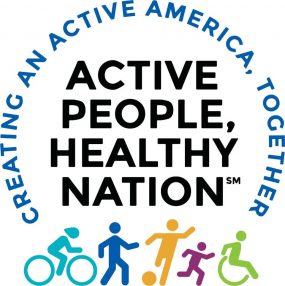Overcoming Barriers to Physical Activity
Ready to Become More Physically Active?
Given the health benefits of regular physical activity, we might wonder why Americans are not active at recommended levels.
Understanding common barriers to physical activity and creating strategies to overcome them may help you make physical activity part of your daily life. To learn more about how to overcome barriers to physical activity, read below and visit Getting Started.
Suggestions for Overcoming Physical Activity Barriers

Lack of time
- Identify available time slots. Monitor your daily activities for one week. Identify at least five 30-minute time slots you could use for physical activity.
- Add physical activity to your daily routine. For example, walk or ride your bike to work or shopping, organize school activities around physical activity, walk the dog, take the stairs, exercise while you watch TV, park farther away from your destination, etc.
- Select activities, such as walking, jogging, or stair climbing that you can do based on the time that you have available (e.g., 5 minutes, 10 minutes, 20 minutes).
- Take advantage of work physical activity facilities and/or programs. Hold walking meetings and conference calls if possible. During phone calls try to stand, stretch, or move and walk around some, if possible.
Social support
- Explain your interest in physical activity to friends and family. Ask them to support your efforts.
- Invite friends and family members to exercise with you. Plan social activities involving exercise.
- Develop new friendships with physically active people. Join a gym or group, such as the YMCA or a hiking club.
Lack of energy
- Schedule physical activity for times in the day or week when you feel energetic.
- Convince yourself that if you give it a chance, physical activity will increase your energy level; then, try it.
Lack of motivation
- Plan ahead. Make physical activity a regular part of your daily or weekly schedule and write it on your calendar.
- Invite a friend to exercise with you on a regular basis and write it on both your calendars.
- Join an exercise group or class.
Fear of injury
- Learn how to warm up and cool down to prevent injury.
- Learn how to exercise appropriately considering your age, fitness level, skill level, and health status.
- Choose activities you feel you can do safely, and increase the amount you do gradually as your confidence and abilities grow.
Lack of skill
- Select activities that don’t require new skills, such as walking, climbing stairs, or jogging.
- Take a class to develop new skills.
High costs and lack of facilities
- Select activities that require minimal facilities or equipment, such as walking, jogging, jumping rope, or calisthenics.
- Identify inexpensive, convenient resources available in your community (community education programs, park and recreation programs, worksite programs, etc.).
Weather conditions
- Develop a set of regular activities that are always available regardless of weather (aerobic dance, indoor swimming, stair climbing, rope skipping, mall walking, dancing, or home activities including indoor cycling, calisthenics, exercise videos, etc.)
Connect with Nutrition, Physical Activity, and Obesity

